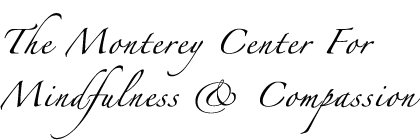Meditation ~ When the Going Gets Rough
You’re a meditator. You have a mindfulness practice that matters, and that’s as much a part of your day as waking up in the morning and going to bed at night. It grounds you, releases you from over-worrying things (at least most of the time), and it’s helped you live a kinder, less judgmental, even more peaceful life.
And then something rocks your world. Maybe a serious illness diagnosis. Or a breakup. Perhaps a life-changing financial hit. Or the sudden death of a loved one.
Right now, meditation doesn’t feel helpful, or even possible. Sitting to practice just dissolves the ribbons of your heart into tears, and your mind into waves of panic, not to mention the onslaught of fierce story streams that render mindful presence “impossible” for more than a few seconds at a time —despite months, or years, of practice.
The truth is, most of us won’t get through life without such moments, no matter how disciplined our practice has been. And that too is what mindfulness practice is about: Knowing and bearing the times in life that simply take us to our knees, and that are as much a part of living - mindfully or otherwise - as all the rest.
There’s no one right way of navigating through the toughest of times. But there are some roadmaps that embodied meditation can lay out for us that offer helpful ways of weathering intensely challenging times. Both science and lived experience bear out that practicing with these roadmaps between life’s storms will help make them easier to access when hardest times inevitably hit.
While deeply painful events can feel isolating, there actually is no need to try to get through them alone. In fact, reaching out to a trusted friend, family member, spiritual advisor, or mental health professional truly is a wise and important step. For many, choosing your favorite natural setting for a quiet walk, or in which simply to be still, offers gentle healing; being present with the sights, smells, sounds, and touch of the beach, ocean, or forest can offer the balm of grounding solace.
The pain of an unexpected (or expected) crisis can seem as though it will be endless, but the truth is, as mindfulness teaches: Everything we “know,” feel, and think in this moment will change. How many nightmarish moments have you experienced over time that felt like they’d last forever? What percentage of them actually did?
Last month’s blog described how the 3-sync mindfulness practice helps us align body, emotions, and thinking into mindful, embodied presence. The following are some ways you might try engaging with the experiences of body, emotion, and mind to help weather the effects of tough times. Feel free to substitute any of these with the practices you know to be uniquely healing for you:
Body - Scan through the body, noticing any places of tension, and relaxing, as you’re able, with the next outbreath. Feel each breath. Let the sensation of the breath, a moment at a time, guide you from the pull of imagined futures or past rehashing, back to presence. Attending to the sensation of one breath in, one breath out, allowing the experience of just one moment, one breath, at a time; with each inhale, you may take in a phrase or image that brings a sense of light or comfort; with each outbreath, feel the body letting go, breathing down through the torso, legs, and feet, as you sense yourself held and grounded into the earth.
Emotions - Instead of resisting or fighting against emotions, allowing them to be here, just as they are, like waves - fear, anger, sadness… Letting them be as they are, moving, rising, falling, like waves, as you’re able. Just knowing what is here, as a felt sensation. When you sense an emotion is becoming too intense, bringing your attention back to the sensation of breathing, or to the pressure and contact of your feet on the ground, or perhaps bringing your hand to your heart, and feeling the warmth and gentle pressure of the hand’s touch. Using compassionate phrases as a comforting friend might, such as: “This really hurts,” or “Right now, this is painful,” or “This too will pass…” (Click here for a guided audio: Self-Compassion for Difficult Times.)
Mind - When you catch thought streams sucking you into tunnels of panic or worry, let your attention move back into the body. Letting the thoughts take a backseat, bring to the forefront felt sensations in the body: What am I feeling right now? Where does this hurt? Is there a place that feels ok? Is there numbness, or no feeling? (That’s ok too!) Breathing in, I know this breath, this beating heart; I sense the warmth of my palms, the chill, or tightness, or tingling in my shoulders, hands, toes, belly… Breathing out, I release tension, stress, or worry, sadness… into the spaciousness of the air around me, the sky, the universe…
In this way, mindfulness becomes a compassionate friend. Just as another best friend — human, pet, or otherwise — would show up to be with you in your most difficult moments, these practices allow you to bear compassionate witness to yourself, and to whatever waves of discomfort move in and through you, and to their deeply visceral, temporary nature.
- Embodied practice is the way it sounds: Meditating not just ‘mentally’ -- by quieting mental activity, or thoughts -- but with moment to moment awareness of felt, bodily sensations.
